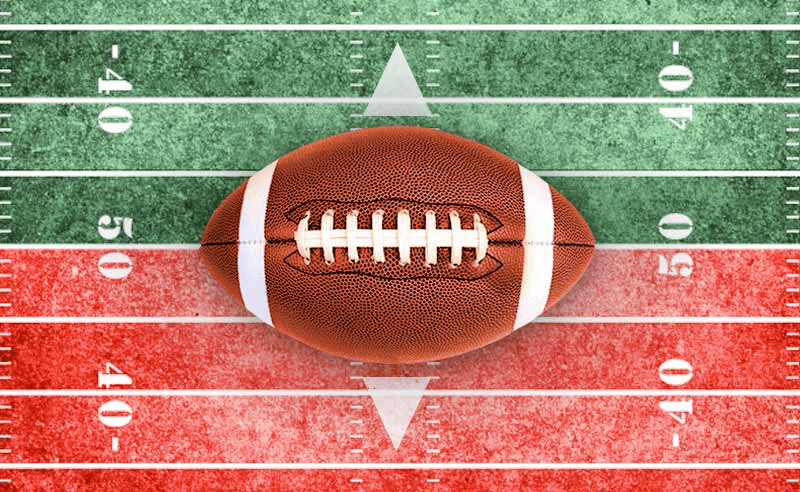How Over Under Works
Posted By admin On 23/07/22The important thing to know is that under federal law, overtime is calculated weekly. This means if your employee works over 40 hours during the week of typical paid holidays like Thanksgiving, Christmas, or New Year’s Day, they are entitled to “time and a half” for the hours worked over 40 hours. Hi Overworked and Over It. After working with more than 500 career changers in under two years, he joined The Muse to work on the operations around Coach Connect.
How You Qualify
To qualify for Social Security disability benefits, you must first have worked in jobs covered by Social Security. Then you must have a medical condition that meets Social Security's definition of disability. In general, we pay monthly benefits to people who are unable to work for a year or more because of a disability.
Benefits usually continue until you are able to work again on a regular basis. There are also a number of special rules, called 'work incentives,' that provide continued benefits and health care coverage to help you make the transition back to work.
If you are receiving Social Security disability benefits when you reach full retirement age, your disability benefits automatically convert to retirement benefits, but the amount remains the same.
How Much Work Do You Need?
In addition to meeting our definition of disability, you must have worked long enough — and recently enough — under Social Security to qualify for disability benefits.
Social Security work credits are based on your total yearly wages or self-employment income. You can earn up to four credits each year.
The amount needed for a work credit changes from year to year. In 2021, for example, you earn one credit for each $1,470 in wages or self-employment income. When you've earned $5,880, you've earned your four credits for the year.
The number of work credits you need to qualify for disability benefits depends on your age when you become disabled. Generally, you need 40 credits, 20 of which were earned in the last 10 years ending with the year you become disabled. However, younger workers may qualify with fewer credits.
For more information on whether you qualify, refer to How You Earn Credits.
What We Mean By Disability
The definition of disability under Social Security is different than other programs. Social Security pays only for total disability. No benefits are payable for partial disability or for short-term disability.
We consider you disabled under Social Security rules if all of the following are true:
- You cannot do work that you did before because of your medical condition.
- You cannot adjust to other work because of your medical condition.
- Your disability has lasted or is expected to last for at least one year or to result in death.
This is a strict definition of disability. Social Security program rules assume that working families have access to other resources to provide support during periods of short-term disabilities, including workers' compensation, insurance, savings, and investments.
How We Decide If You Are Disabled
Over Under How It Works

If you have enough work to qualify for disability benefits, we use a step-by-step process involving five questions to determine if you are disabled. The five questions are:
1. Are you working?
If you are working in 2021 and your earnings average more than $1,310 a month, you generally cannot be considered disabled.
If you are not working, we will send your application to the Disability Determination Services (DDS) office that will make the decision about your medical condition. The DDS uses Steps 2-5 below to make the decision.
2. Is your condition 'severe'?
Your condition must significantly limit your ability to do basic work-related activities, such as lifting, standing, walking, sitting, or remembering – for at least 12 months. If it does not, we will find that you are not disabled.
If your condition does interfere with basic work-related activities, we go to Step 3.
3. Is your condition found in the list of disabling conditions?

For each of the major body systems, we maintain a list of medical conditions that we consider severe enough that it prevents a person from doing substantial gainful activity. If your condition is not on the list, we have to decide if it is as severe as a medical condition that is on the list. If it is, we will find that you are disabled. If it is not, we then go to Step 4.
We have two initiatives designed to expedite our processing of new disability claims:
- Compassionate Allowances: Certain cases that usually qualify for disability can be allowed as soon as the diagnosis is confirmed. Examples include acute leukemia, Lou Gehrig’s disease (ALS), and pancreatic cancer.
- Quick Disability Determinations: We use sophisticated computer screening to identify cases with a high probability of allowance.
For more information about our disability claims process, visit our Benefits For People With Disabilities website.
4. Can you do the work you did previously?

At this step, we decide if your medical impairment(s) prevents you from performing any of your past work. If it doesn’t, we’ll decide you don’t have a qualifying disability. If it does, we proceed to Step 5.
5. Can you do any other type of work?

If you can’t do the work you did in the past, we look to see if there is other work you could do despite your medical impairment(s).
We consider your medical conditions, age, education, past work experience, and any transferable skills you may have. If you can’t do other work, we’ll decide you are disabled. If you can do other work, we’ll decide that you don’t have a qualifying disability and your claim will be denied.
Special Situations
Most people who receive disability benefits are workers who qualify on their own records and meet the work and disability requirements we have just described. However, there are some situations you may not know about:
Special Rules For People Who Are Blind Or Have Low Vision
We consider you to be legally blind under Social Security rules if your vision cannot be corrected to better than 20/200 in your better eye or if your visual field is 20 degrees or less, even with a corrective lens. Many people who meet the legal definition of blindness still have some sight and may be able to read large print and get around without a cane or a guide dog.
If you do not meet the legal definition of blindness, you may still qualify for disability benefits if your vision problems alone or combined with other health problems prevent you from working.
There are a number of special rules for people who are blind that recognize the severe impact of blindness on a person's ability to work. For example, the monthly earnings limit for people who are blind is generally higher than the limit that applies to non-blind disabled workers.
In 2021, the monthly earnings limit is $2,190.
Benefits For Disabled Widows Or Widowers
If something happens to a worker, benefits may be payable to their widow, widower, or surviving divorced spouse with a disability if the following conditions are met:
How Over Under Works Nba
- The widow, widower, or surviving divorced spouse is between ages 50 and 60.
- The widow, widower, or surviving divorced spouse has a medical condition that meets the definition of disability for adults and the disability started before or within seven years of the worker's death.
Widows, widowers, and surviving divorced spouses cannot apply online for survivors benefits. However, if they want to apply for these benefits, they should contact Social Security immediately at 1-800-772-1213 (TTY 1-800-325-0778) to request an appointment
To speed up the application process, complete an Adult Disability Report and have it available at the time of your appointment.
We use the same definition of disability for widows and widowers as we do for workers.
Benefits For A Disabled Child
A child under age 18 may be disabled, but we don't need to consider the child's disability when deciding if he or she qualifies for benefits as a dependent. The child's benefits normally stop at age 18 unless he or she is a full-time student in an elementary or high school (benefits can continue until age 19) or is disabled.
Children who were receiving benefits as a minor child on a parent’s Social Security record may be eligible to continue receiving benefits on that parent’s record upon reaching age 18 if they are disabled.
Adults Disabled Before Age 22
An adult who has a disability that began before age 22 may be eligible for benefits if a parent is deceased or starts receiving retirement or disability benefits. We consider this a 'child's' benefit because it is paid on a parent's Social Security earnings record.
The disabled 'adult child' — including an adopted child, or, in some cases, a stepchild, grandchild, or step grandchild — must be unmarried, age 18 or older, have a disability that started before age 22, and meet the definition of disability for adults.
It is not necessary that the disabled 'adult child' ever worked. Benefits are paid based on the parent's earnings record.
- A disabled 'adult child' must not have substantial earnings. The amount of earnings we consider 'substantial' increases each year. In 2021, this means working and earning more than $1,310 a month.
What if the adult child is already receiving SSI benefits or disability benefits on his or her own record?
A disabled 'adult child' already receiving SSI benefits or disability benefits on his or her own record should check to see if benefits may be payable on a parent's earnings record. Higher benefits might be payable and entitlement to Medicare may be possible.
How do we decide if an adult 'child' is disabled for SSDI benefits?
If a child is age 18 or older, we will evaluate his or her disability the same way we would evaluate the disability for any adult. We send the application to the Disability Determination Services (DDS) in your state that completes the disability decision for us.
What happens if the adult child gets married?
If he or she receives benefits as a disabled 'adult child,' the benefits generally end if he or she gets married. However, some marriages (for example, to another disabled 'adult child') are considered protected.
The rules vary depending on the situation. Contact a Social Security representative at
To speed up the application process, complete an Adult Disability Report and have it available at the time of your appointment.
Related Information
Publications
- SSI Child Disability Starter Kit (for children under age 18)

An over–under or over/under (O/U) bet is a wager in which a sportsbook will predict a number for a statistic in a given game[1] (usually the combined score of the two teams), and bettors wager that the actual number in the game will be either higher or lower than that number.[2][3] For example, in Super Bowl XXXIX, most Las Vegascasinos set the over–under for the score of the game at 46.0. A bettor could wager that the combined score of the two teams would be either more than or less than that number. Since the combined score of that game was 45, anyone who had bet on 'under' won.
Initial and final value[edit]
The goal of a sportsbook is to have an equal value of bets on both sides of the over–under. In theory, this means that the manager could set the value at zero and then re-adjust based on either the number of incoming bets and/or events that influence the potential outcome. In practice, the initial value is based on both quantitative (e.g. win–loss record, average points per game, etc.) and anecdotal information (e.g. media reports, injury status of players, etc.).
As with other types of bets where the odds of either outcome are meant to be even, the vigorish (or 'vig') is typically set at or about 5% of the total wager. Using American odds, this will result in both outcomes initially being quoted at -110 (i.e. bettors must risk $110 to win $100). If the amount bet on both outcomes is exactly even, using such odds would result in the sportsbook earning $5 in gross profit for every $110 wagered.
Of course, bettors will not necessarily risk the same amount of money on both outcomes every time. In such circumstances, there are two ways a sportsbook can mitigate the risk. The first is to adjust the O/U while keeping the odds of both at -110. For example, if the O/U for a football game is set at 45.5 and the action heavily favors the 'over' then the O/U could be adjusted to 46.5 to encourage bettors to take the 'under.' The risk here is that the sportsbook could lose a lot of money by being 'middled' - using the aforementioned example, if the final combined score is 46 then the sportsbook would be obligated to pay both the initial bettors who bet 'over' and the later bettors who bet 'under.'
The other method to mitigate risk is to adjust the odds on the initial O/U, which is slightly more complicated but eliminates the risk of being 'middled.' In the aforementioned example, the 'under' could be adjusted to -105 while the 'over' is changed to -115 (meaning bettors would have to risk $105 and $115 respectively to win $100) in order to make the original 'under' proposition more attractive (and the 'over' less so) to bettors. In actual scenarios, even adjustments of -100 (i.e. 'even money') and -120 are common place as sportsbooks typically endeavor to maintain steady margins and minimize risk.
Statistics[edit]
Though this bet is most commonly made with the combined score of the two teams, many other statistics can be used, including:
- In American football, a player's or team's total rushingyards or attempts, down conversions (first or third), interceptions, completions, field goal percentage, etc.
- In basketball, a player's or team's total assists, blocks, turnovers, steals, etc.
- In baseball, a player's or team's total number of home runs, RBIs, etc.
Dice[edit]
A variant of overunder betting, known as Under Over, is a dice game played at various festivals. The object of the game is to predict whether the dice will roll to a total of under 7, over 7, or at 7. The game is typically played with 2 dice.
A player typically places a wager on one of three spaces. These spaces are:
- Under 7 (usually pays 1–1)
- Over 7 (usually pays 1–1)
- 7 (usually pays 4–1)
For instance if one bets one dollar on under and the dealer rolls under, they gain a dollar as well as get their dollar back. If the dealer rolls a seven and one bets on it, they make four dollars. Once all the bets have been placed the attendant closes the betting board with a screen and then puts the dice through the chute. Players then get paid accordingly.
One variation of Under Over involves foam dice, two of which are thrown in the middle of the players; in another variation, two balls are thrown into a giant wheel consisting of twelve spaces of numbers ranging from 1–6. No wire fence is used to block the bets in that case.
References[edit]
- ^Kochan, M. (2013). Secrets of Professional Sports Betting. Cardoza Publishing. p. 12. ISBN978-1-58042-438-7. Retrieved April 25, 2015.
- ^Williams, L.V.; Siegel, D.S. (2014). The Oxford Handbook of the Economics of Gambling. Oxford Handbooks in Economics Series. OUP USA. p. 205. ISBN978-0-19-979791-2.
- ^Fodor's Las Vegas 2015. Full-color Travel Guide. Fodor's Travel Publications. 2014. ISBN978-0-8041-4300-4.